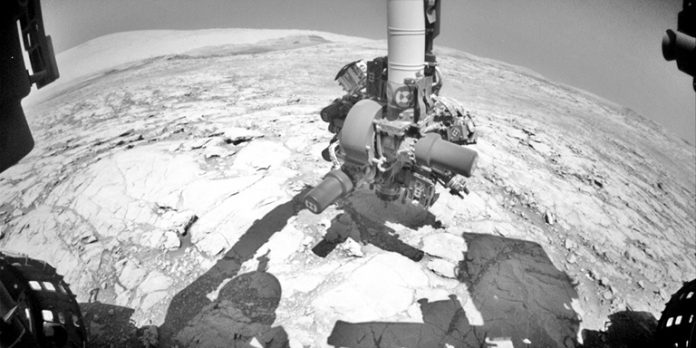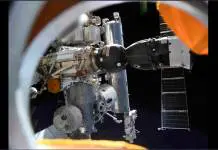
NASA is awfully busy with its myriad Mars missions, but Curiosity remains one of the most promising actually doing research on the ground of the Red Planet. The administration announced on Monday that they had successfully tested a new technique that will allow the rover to drill for samples again.
The announcement comes amidst a wave of Mars news, including the discovery of a twisted tail on our nearest neighbor and the promise of electricity in the moons Phobos and Deimos. Both phenomena are influenced by the Sun’s solar wind, which is heavily charged with electricity as it travels across the universe.
Mars’ surface has captivated many in recent years, as NASA points at the moon as a possible stepping stone for the first mission to land on other planets. Private companies like SpaceX and Blue Origin are also eyeing the planet as a realistic goal within the next few decades.
What is wrong with Curiosity’s drill?
Since December 2016, Curiosity has not been able to engage in drilling and underground sample collection due to a problem affecting the functionality of the drill. The motorized feed that made the drill bit make contact with the ground “stopped working reliably” and all digging and drilling operations were suspended.
NASA has continued to use the rover’s multiple other analysis tools during this period, but now it might be able to resume drilling in a couple of months thanks to a workaround engineered and successfully tested here on Earth.
Scientists, ever the problem-solvers, suggested using Curiosity’s robotic arm to exert pressure on the drill so as to make the drill bit make contact with the ground. They say this new ‘extended feed’ method shows promise, but that they still need to run some more tests to make sure it will work on Mars.
Solar wind may be electrically charging areas of Mars’ moon Phobos, presenting challenges for future missions there: https://t.co/kbOGO8LIut pic.twitter.com/UVyCgwUAzk
— NASA (@NASA) October 22, 2017
NASA’s MAVEN is also busy with outside discoveries
Drilling on the surface of the Red Planet is a top priority since Curiosity’s mission span has been extended indefinitely, and a new rover will launch oin2020 based on the original design of Curiosity.
Meanwhile, up in the Martian sky, the MAVEN spacecraft is hard at work too to study the planet’s old atmosphere and other physical conditions best observable from above.
Recently, researchers found that Mars has a twisted tail formed thanks to magnetic fields originating from the Sun and coming into contact with the planet’s own fields. This reconnection might have caused the atmosphere to slip away from the planet over time, as new studies suggest.
Source: NASA











